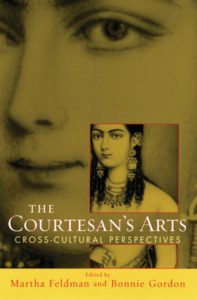From the introduction:
“The circumstances of the contemporary prostitute might be distinct from those in the past; but literary and cinematic representations continue to be steeped in traditional perception, verbalization and visualization, all well established and sanctioned by the society. Today, she might be a citizen of the Indian state, part of the democracy, with the right to vote and liable to be judged in a civil court; but this makes little difference to her social status. Additionally, the representation-narration around the prostitute continues to tell old tales, seldom revealing the tremendously varied and complex histories behind women now held under one blanket term prostitute.
First and foremost, the paper bases itself upon the premise that there is no one group of women involved here. Going further, it seeks to highlight the fact that behind the formation and existence of these groups of women lies vast and varied social, economic, cultural and political circumstances. And the retrieval of those lost histories (even if partial or incomplete) requires an investigation into terms coined to mark ‘such women’ and the history of their linguistic coinage. Interestingly, the retrieval of this history also requires rigourous survey into the history of literary representation. There has been a long tradition of seeing language and representation as tools for the perpetuation of social inequalities. Though that is true, we now also realize that the production of material history is closely linked with the production of language, literature and arts—that the investigation of one leads to the other. The histories of linguistic coinage and the changing course of words and their meanings are important to know what practices are in currency at what time. What the paper ultimately establishes is that the history of the ‘prostitute’ forms an important chapter in the history of work and woman.
The study shows that to begin with, all these women forming various groups were indicated by different word-coinage. They were professional women or were often treated as such. The more they lost their right to work, the more they had to resort to ‘prostitution’. They are patita or fallen women—what they have fallen from is actually their professional status. Early facts and realities are all obliterated now, replaced by a ghettoization of ‘all such women’ into being only sex workers and the rise of social and moral discourse around them.
Three words veshyā, ganika and tawaif are chosen in this article, which begins with an inquiry into the etymologies behind each term, followed by a survey of representation-narration of the women belonging to these groups—today all seen as ‘prostitute’. Coming from Sanskrit, the word veshyā stands for a prostitute in most Indian languages (there surely are other local terms; this is mostly used for formal or literary purposes). The other two words ganika and tawaif are not in use any more, as that particular social situations in which they existed are no more. Nevertheless, they remain important because of their continuous representation in films of all regions and languages.
It is through the continuous use of language and reproduction of representation that societies maintain their status quo, which in this case is an aggregate of opinions and facts: there is one kind of women who sell sexual favours; they live—this they must—outside the purview of the society; they are morally inferior to all members of the mainstream society—which is the reason why they are ‘outside’. Though they are of one kind, they do not actually make up any caste, class or community—they are women who might or might not stay together (mostly they do). They might have some of their own rules of cluster formation. More commonly, these women belong to a house ruled by a matriarchal figure and so are socially and economically governed by each house-rule; in all other ways they are outside the patriarchal society. The only transaction they have with the mainstream society is when men visit them (for a short span of time) for sexual purposes; the women of the mainstream society have nothing to do with them.”

